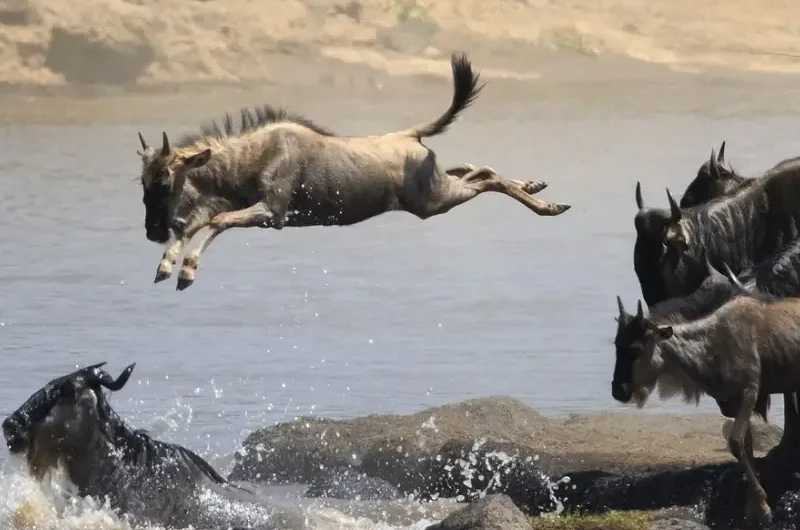Safety Tips for Your Kenya Migration Safari
The Great Wildebeest Migration in Kenya’s Masai Mara is one of the most breathtaking wildlife experiences on the planet. Millions of wildebeests, zebras, and gazelles traverse the plains, attracting predators and creating incredible natural spectacles. While a migration safari is thrilling, it is essential to prioritize safety to ensure an enjoyable and secure experience. Here are key safety tips for your Kenya migration safari.
Choose a Reputable Safari Operator
Booking your safari with an experienced and licensed operator, such as Chacal Safaris, is the first step in ensuring safety. Professional guides are trained in wildlife behavior, first aid, and emergency protocols. They know the best routes, viewing spots, and how to avoid dangerous encounters, providing peace of mind throughout your safari.
Always Stay in the Vehicle
During game drives, it is crucial to remain inside the vehicle unless your guide explicitly allows otherwise. Predators such as lions, leopards, and cheetahs are unpredictable, and even seemingly calm animals can pose a threat. Staying in the vehicle ensures your safety while allowing close observation of wildlife.
Follow Your Guide’s Instructions
Your safari guide is trained to navigate wildlife safely. Always listen carefully to instructions regarding distance from animals, stopping points, and photography. Ignoring advice can put both you and the wildlife at risk.
Maintain a Safe Distance from Wildlife
While it’s tempting to approach animals for better photos, keeping a safe distance is essential. Binoculars and telephoto lenses allow you to observe and capture stunning images without disturbing or endangering yourself or the animals.
Be Cautious During River Crossings
Mara River crossings are dramatic and dangerous for animals, but they can also pose risks to observers. Avoid venturing too close to the riverbank, as the terrain can be slippery and unstable. Observing from a safe, elevated vantage point ensures both safety and optimal views of the crossing.
Protect Yourself from the Elements
The Kenyan savannah can be harsh. To stay safe:
- Wear sun protection, including a wide-brimmed hat, sunglasses, and sunscreen.
- Stay hydrated by carrying enough water during game drives.
- Dress in layers to adjust to temperature changes between morning and evening.
Health Precautions
- Take malaria prophylaxis if recommended by your healthcare provider.
- Carry basic first aid supplies for minor cuts or insect bites.
- Ensure vaccinations are up to date before traveling to Kenya.
Respect Wildlife and Conservation Rules
Always respect the animals and the environment. Do not feed wildlife, litter, or stray off designated paths. Following park rules helps protect both you and the ecosystem that supports the migration.
Emergency Preparedness
Ensure your safari operator has clear emergency procedures, including communication tools and access to medical facilities. Traveling with guides familiar with the area minimizes risks and provides reassurance in case of unexpected situations.
Conclusion
A migration safari in Kenya’s Masai Mara is an unforgettable adventure, but safety should always come first. By choosing a reputable operator, following your guide’s instructions, maintaining a safe distance from wildlife, protecting yourself from the elements, and adhering to health and conservation guidelines, you can enjoy the Great Wildebeest Migration safely. Prioritizing these precautions ensures that your safari is not only thrilling but also secure and worry-free.


Comments